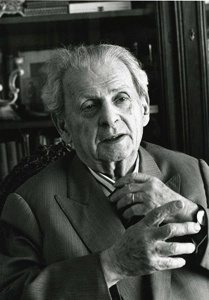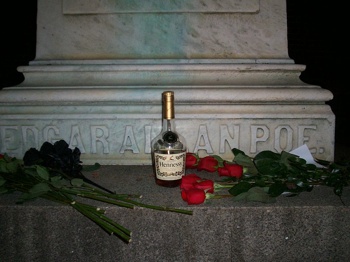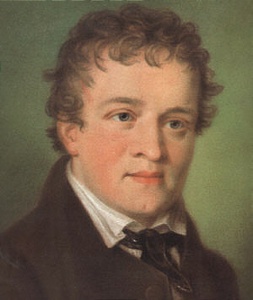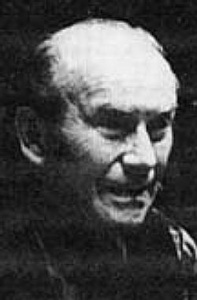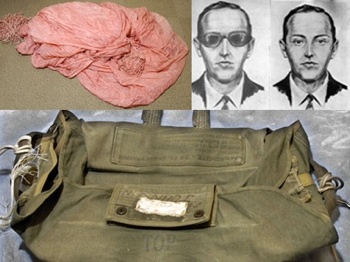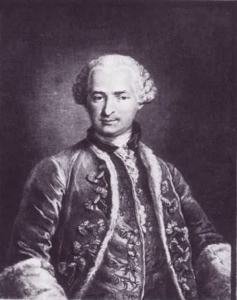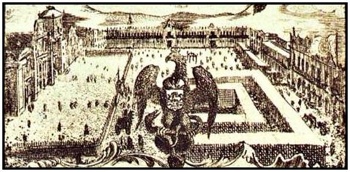 Mysteries
Mysteries  Mysteries
Mysteries  History
History 10 Surprising Stories About the Texas Rangers
 Humans
Humans 10 Philosophers Who Were Driven Mad by Their Own Theories
 Miscellaneous
Miscellaneous 10 Video-Game-Worthy Weapons and Armors from History
 Weird Stuff
Weird Stuff 10 Psychics Who Accurately Predicted Wartime Events
 The Arts
The Arts 10 Pieces of Art Inspired by a Broken Heart
 Health
Health 10 Science Fiction-Sounding New Medical Treatments
 History
History 10 Surprising Facts About the Father of Submarine Warfare
 Space
Space Ten Astonishing New Insights into Alien Worlds
 Weird Stuff
Weird Stuff 10 Bizarre Summer Solstice Rituals Still Practiced Today
 Mysteries
Mysteries Top 10 Haunting Facts About the Ghost Ship MV Alta
 History
History 10 Surprising Stories About the Texas Rangers
 Humans
Humans 10 Philosophers Who Were Driven Mad by Their Own Theories
Who's Behind Listverse?

Jamie Frater
Head Editor
Jamie founded Listverse due to an insatiable desire to share fascinating, obscure, and bizarre facts. He has been a guest speaker on numerous national radio and television stations and is a five time published author.
More About Us Miscellaneous
Miscellaneous 10 Video-Game-Worthy Weapons and Armors from History
 Weird Stuff
Weird Stuff 10 Psychics Who Accurately Predicted Wartime Events
 The Arts
The Arts 10 Pieces of Art Inspired by a Broken Heart
 Health
Health 10 Science Fiction-Sounding New Medical Treatments
 History
History 10 Surprising Facts About the Father of Submarine Warfare
 Space
Space Ten Astonishing New Insights into Alien Worlds
 Weird Stuff
Weird Stuff 10 Bizarre Summer Solstice Rituals Still Practiced Today
Top 10 Mysterious People
Over the centuries, history is filled with wonderful tales of mysterious people – many of whom are never identified. This list is a selection of the most significant or mysterious people of this variety. As usual, if you know of other fascinating people that would suit a similar follow up list, be sure to tell us in the comments.
Monsieur Chouchani (died 1968) is the nickname of an anonymous and mysterious Jewish teacher who taught a number of highly regarded students including Emmanual Levinas (pictured above) and Elie Wiesel in Europe after World War II. Very little is known about Chouchani, including his real name. His origins and entire life history were kept a closely guarded secret. His gravestone in Montevideo, Uraguay where he died reads: “The wise Rabbi Chouchani of blessed memory. His birth and his life are sealed in enigma.” The text was written by Elie Wiesel who also paid for the gravestone.
There is no known body of work by Chouchani himself, but he left a very strong intellectual legacy via his students. Chouchani dressed like a vagabond but was a master of vast areas of human knowledge, including science, mathematics, philosophy and especially the Talmud. Most of the details of his life that are known come from the writings and interviews with his students.
The Poe Toaster is the nickname given to a mysterious man who pays annual tribute to Poe by visiting his grave every year. The strange tradition started in 1949 – a century are after Poe’s death, and it occurs every year on the author’s birthday (January 19). According to Wikipedia: “In the early hours of the morning on that date, a black-clad figure, presumed to be male, with a silver-tipped cane enters the Westminster Hall and Burying Ground in Baltimore, Maryland. The individual proceeds to Poe’s grave, where he or she raises a cognac toast. Before departing, the Toaster leaves three red roses and a half-bottle of cognac on the grave.”
The Toaster wears a black hat and coat and hides his face with a hood or scarf. Groups of reporters and admirers are often on hand to watch the event. There have been no attempts to interfere with the Toaster or to unmask him – most likely out of respect for the tradition.
During the analysis of the film footage of the assasination of John F. Kennedy in 1963, a mysterious woman was spotted. She was wearing a brown overcoat and a scarf on her head (the scarf is the reason for her name as she wore it in a similar style to Russian grandmothers – also called babushkas). The woman appeared to be holding something in front of her face which is believed to be a camera. She appears in many photos of the scene. Even after the shooting when most people had fled the area, she remained in place and continued to film. Shortly after she is seen moving away to the East up Elm Street. The FBI publically requested that the woman come forward and give them the footage she shot but she never did.
In 1970 a woman called Beverly Oliver came forward and claimed to be the Babushka Woman, though her story contains many inconsistencies. She is generally regarded as a fraud. To this day, no one knows who the Babushka Woman is or what she was doing there. More unusual is her refusal to come forward to offer her evidence.
On May 26, 1828 a teenage boy appeared in the streets of Nuremberg, Germany. He carried a letter with him which was addressed to a captain of 6th cavalry regiment. The anonymous author said that the boy was given into his custody, as an infant, on the 7th October 1812, and that he had never let him “take a single step out of my house”. Now the boy would like to be a cavalryman, thus the captain should take him in or hang him. Hauser claimed that he had, for as long as he could think back, spent his life always totally alone in a darkened 2×1×1.5 metre cell (little more than the size of a one-person bed in area) with only a straw bed to sleep on and a horse carved out of wood for a toy. Hauser claimed that the first human being he ever had had contact with had been a mysterious man who had visited him not long before his release, always taking great care not to reveal his face to him. According to contemporary rumors – probably current as early as 1829 – Kaspar Hauser was the hereditary prince of Baden that was born on September 29, 1812 and had died within a month. It was claimed that this prince had been switched with a dying baby, and had indeed appeared 16 years later as “Kaspar Hauser” in Nuremberg. Hauser died after receiving a stab wound to the chest which was possible self-inflicted. He claimed he had been stabbed by the man who had kept him as an infant.
In 2002, the University of Münster analyzed hair and body cells from locks of hair and items of clothing that were alleged to belong to Kaspar Hauser. The DNA samples were compared to a DNA segment of Astrid von Medinger, a descendant in the female line of Stéphanie de Beauharnais, who would have been Kaspar Hauser’s mother if indeed he had been the hereditary prince of Baden. The sequences were not identical but the deviation observed is not large enough to exclude a relationship, as it could be caused by a mutation.
Fulcanelli (1839 – ?1953) is a pseudonym of a late 19th century French Alchemist and author whose identity is still unknown. Much mystery surrounds his life and works – leading to him being branded a cultural phenomenon. One of the more extravagant tales retells how his devoted pupil (Eugene Canseliet – pictured above) successfully transformed 100 grams of lead in to gold with the use of a small quantity of “Projection Powder” given to him by his teacher.
It is believed that on the verge of World War II, the Abwehr (German intelligence service) was in active (but fruitless) pursuit of Fulcanelli because of his knowledge of the technology of nuclear weapons. Fulcanelli had met with a French atomic physicist and given him accurate details regarding nuclear weapons technology and he claimed that atomic weaponry had been used against humanity in time long past.
“According to Canseliet (Fulcanelli’s student), his last encounter with Fulcanelli happened in 1953 (years after his disappearance), when he went to Spain and was taken to a castle high in the mountains for a rendezvous with his former master. Canseliet had known Fulcanelli as an old man in his 80s but now the Master had grown younger: he was a man in his 50s. The reunion was brief and Fulcanelli once again disappeared leaving no trace of his whereabouts. At this time, Fulcanelli would have been 114 years old.” [Source]
D. B. Cooper (aka “Dan Cooper”) is a pseudonym given to a notorious aircraft hijacker who, on November 24, 1971, after receiving a ransom payout of $200,000, leapt from the back of a Boeing 727 as it was flying over the Pacific Northwest somewhere over the southern Cascades.
Cooper has not been seen since and it is not known whether he survived the jump. In 1980, an eight year old boy found $5,800 of soggy $20 bills washed up on the banks of the Columbia river. The serial numbers matched those of the ransom money which had been noted to make it easier to track Cooper later.
Cooper escaped from the plane by jumping off the rear airstair with a parachute leading aviation authorities to add stricter measures about the design of planes to prevent it from happening again. In addition, this event caused airports to install metal detectors for the first time.
The Count of St. Germain (allegedly died February 27, 1784) was a courtier, adventurer, inventor, amateur scientist, violinist, amateur composer, and a mysterious gentleman; he also displayed some skills associated with the practice of alchemy. He was known as ‘Der Wundermann’ — ‘The Wonderman’. He was a man whose origin was unknown and who disappeared without leaving a trace. In 1745, Horace Walpole wrote of him:
…the other day they seized an odd man, who goes by the name of Count St. Germain. He has been here these two years, and will not tell who he is, or whence, but professes that he does not go by his right name. He sings, plays on the violin wonderfully, composes, is mad, and not very sensible. He is called an Italian, a Spaniard, a Pole; a somebody that married a great fortune in Mexico, and ran away with her jewels to Constantinople; a priest, a fiddler, a vast nobleman. The Prince of Wales has had unsatiated curiosity about him, but in vain. However, nothing has been made out against him; he is released; and, what convinces me that he is not a gentleman, stays here, and talks of his being taken up for a spy.
Since his death, various occult organizations have adopted him as a model figure or even as a powerful deity. In recent years several people have claimed to be the Count of St. Germain.
The Man in the Iron Mask (died November 1703) was a prisoner held in a number of Jails (including the Bastille) during the reign of King Louis XIV of France. The true identity of the man is unknown because no one ever saw his face which was hidden by a black velvet mask. Fictional retellings of the story refer to the mask as an “Iron” mask. The first records that mention the prisoner are from 1669 when Louis XIV’s minister placed the prisoner in the care of the governor of the prison of Pignerol.
According to the letter that accompanied him, the man’s name was Eustache Dauger. The letter instructed the governor to prepare a cell with multiple doors – to prevent anyone outside from listening in. The prisoner was told that if he spoke to anyone of anything other than his immediate needs, he would be killed. The Governor was the only person who was to see the prisoner, and he provided him with his daily food. When the prisoner died, all of his belongings were destroyed. To this day, no one knows who he was.
Gil Perez was a Spanish soldier who suddenly appeared in Mexico City on October 26, 1593. He was wearing the uniform of the guards of the Del Gobernador Palace in the Philippines. He claimed to have no idea how he had managed to appear in Mexico. He stated that moments before finding himself there, he had been on sentry duty in Manila at the governor’s Palace. He told them that the governor (Don Gómez Pérez Dasmariñas) had just been assassinated.
Two months later, news arrived from the Philippines by ship. They carried news that confirmed that the governor had been killed and they verified other aspects of Perez’s story. Witnesses confirmed that Perez had indeed been on duty in Manila just before arriving in Mexico. In addition, one of the passengers on the ship recognized Perez and swore that he had seen him in the Philippines on October 23. Perez eventually returned to the Philippines and resumed his life – which was uneventful until his death. You can read a more indepth article on Gil Perez here.
The Green Children of Woolpit were two children who appeared in the village of Woolpit in Suffolk, UK, in the 12th century. The children were brother and sister and they had green colored skin. Their appearance was normal in all other areas. They spoke an unrecognized language and refused to eat anything other than pitch from bean pods. Eventually their skin lost its green color. When they learned English they explained that they were from the ‘Land of St Martin’ which was a dark place because the sun never rose far above the horizon. They claimed that they were tending their father’s herd and followed a river of light when they heard the sounds of bells – finding themselves in Woolpit.
Some of the more unusual theories proposed for the origin of the children are that they were Hollow Earth children, parallel dimension children, or Extraterrestrial children.
